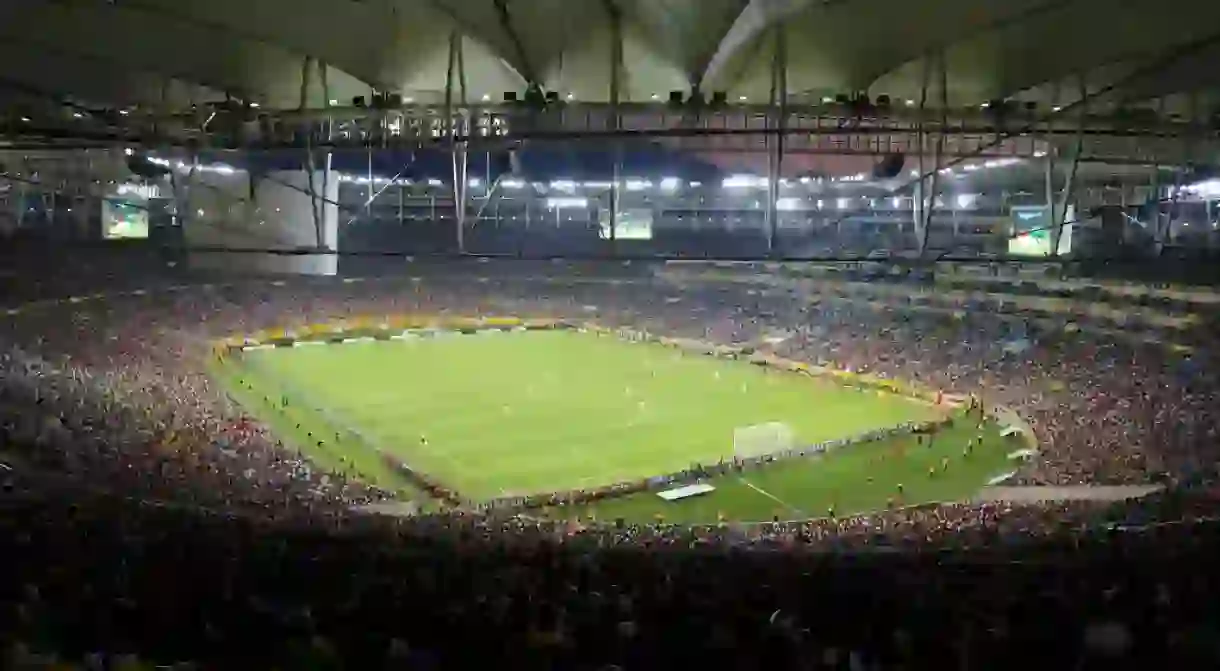How to Attend a Maracanã Football Match

Whether you’re a die-hard football fanatic or someone with a passing curiosity, watching a match at Maracanã is more than just supporting a local team; it’s a chance to experience some of Brazil’s genuine passion for the game. The best games to watch are the ones with the local teams – Flamengo, Botafogo, Fluminense, and Vasco – to guarantee a match brimming with atmosphere, singing, and cheering (or throwing insults, depending on which way the game is going). Here’s everything you need to know about attending a match at Maracanã.
The stadium
Maracanã is the largest stadium in Brazil with a capacity of 78,838 and one of the largest in South America, second only to Estadio Monumental in Peru with its capacity of 80,093. In addition to hosting local matches, Maracanã has also supported historical events such as the FIFA World Cup 2014, the 2106 Olympics, and several large concerts including The Rolling Stones.

Buying tickets
One way to buy tickets is directly through the Flamengo or the Fluminense websites by searching on their sites for upcoming matches and choosing the one you want. Alternatively, you can purchase tickets directly from Gate 1 at Maracanã either in advance or on the day. Just take care as purchasing them on the day limits your seating options. You can buy tickets from people selling them on the street but it’s not that common. You can also buy tickets for all games directly through the FutbolCard site.
Prices of tickets vary and can be as low as R$20 (US$6) to a few hundred reais if you opt for the VIP area on a big match day. Students pay half price so make sure you have your student ID with you if applicable.
Getting a seat
Although a large stadium, Maracanã lacks the lofty heights of the Santiago Bernabéu or the Camp Nou stadiums so pretty much any seat will provide you good views.
Where you decide to sit depends on what you want from the game. The West sector of the stadium is the best place to watch the game calmly regardless of which team you are supporting. To get in amongst the cheering fans, the non-stop singing, and the generally more atmospheric crowd, head to the North or South sectors behind or near to the goals which are dedicated areas for fans to go and support their team.

Arriving at the stadium
Maracanã is located in the north of the city and is easy to get to. From the South Zone, just take the green line towards Pavuna and get off at the Maracanã subway stop. From there, the exit of the metro leads directly to the stadium so is easy to find, yet if in doubt, just follow the swarm of cheering fans.
Alternatively, take an Uber or taxi there. There may be some traffic on big match days but this doesn’t affect taxi availability. Just make sure you plan to arrive at least half an hour before the game begins. The stadium is surrounded by a large cycle path which becomes full of people during match days, especially when Flamengo are playing. There are small bars just across the road from Maracanã where people fuel up on beers before heading in but most people buy cans of beer from the street vendors and drink on the street.

Buying souvenirs
The best time to buy Maracanã souvenirs are on the days before the match at the main entrance where several vendors sell Maracanã merchandise such as hats and keyrings. On match days, some street sellers hang around outside the stadium selling the football team shirts but these are always fake and, although cheap (about US$6), the quality is not that great. To get an official football shirt from a local team, you can buy them from their official stores in Rio de Janeiro or through their websites. Prices start from around R$200 (US$62).
The match itself
The stadium during the summer gets hot and has an open roof so it’s a good idea to use sunscreen before you go. Also use comfortable, closed-toe shoes as there can be plenty of jumping and jostling when fans get overexcited.
You can drink beer in the stadium and they are sold at all the entrances of the seating area. It’s more expensive than the typical market value in Rio but it is the only option for drinking alcohol in the stadium as you are not allowed to bring any kind of drink into Maracanã (you are searched before you enter and water bottles or any other drink will be taken off you).
During the match, expect plenty of cheering, singing, drums, and fans shouting advice to players throughout the match. A game at Maracanã is not a quiet event; rather it is filled with energy and the atmosphere is contagious. Feel free to join in with the singing – you don’t have to know the words as just your enthusiasm and participation will be appreciated.
At the end of the match, most people either take the subway back to their neighborhoods and go to a bar nearby their home or pop into one of the botecos (simple, Brazilian bar) for a celebratory (or to commiserate) post-match drink.













